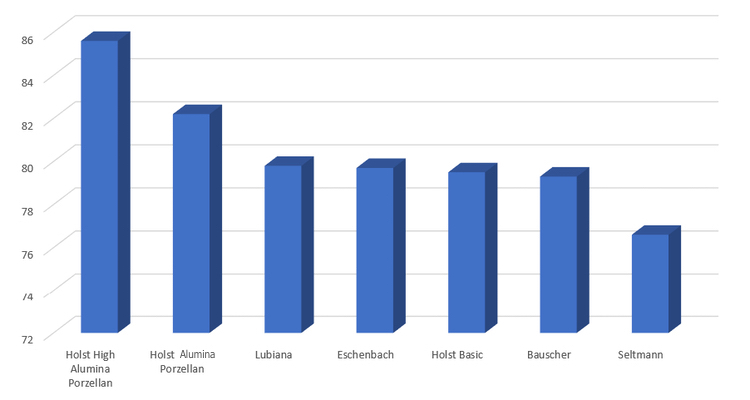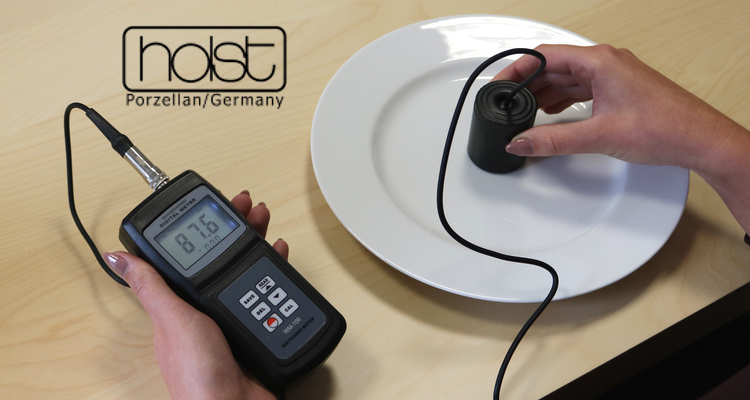Whiteness
Whiteness of porcelain and tableware

Depending on the porcelain manufacturer and factory, the degree of whiteness of the porcelain body varies. The whiteness in the porcelain industry is mainly influenced by the purity of the kaolin in the raw mass. The requirements for the whiteness of porcelain vary in the different consumer markets of the countries. In Russia, for example, a grayer porcelain sherd is accepted than in Germany. This leads to the fact that the production plants deliberately produce greyer or whiter porcelain. To serve the different markets, most factories offer several degrees of whiteness.
We produce our goods all over the world. This means that we have to accept small fluctuations in the degree of whiteness within our product range. These fluctuations are within an absolutely acceptable range and only become apparent on closer inspection and under special lighting conditions. In order to give you a concrete value nevertheless, we test our goods according to a certain measuring method and show the values in the table below.
Our measuring method is compliant with the following international standards:
ISO 2470, ISO2471, GB3978, GB3979, GB7973; GB7974, GB8904.2, QB1840, GB2913, GB13025.2, GB1543, GB10339, GB5950, GB12911, GB2409

The measurement procedure will follow: The light source of the instrument is a long-life LED with 457 nm, which meets the requirements of JJG 512-2002 National Metrological Whiteness Meter Verification. The measurement of the instrument follows the principle of the photoelectric effect. The propagating reflectance of the sample surface is received by the optical cell. The value is then amplified by a high-precision auto-zero amplifier, which is entered into the calibration circuit for energy calibration. The display then shows the whiteness value.
High Alumina Porcelain 86 - 88
Alumina Porcelain 80 - 82
